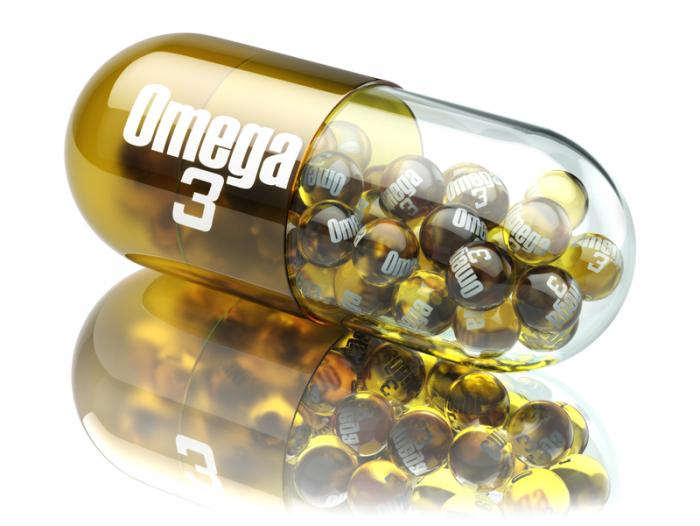Keeping your omega-3 fatty acids ratio high is probably the most critical way to help keep your bodies inflammatory markers in check.
Why? because we now know that inflammation is the gateway to nearly every chronic and metabolic health issue that so many of us struggle with today.

Eating whole foods that are rich in omega-3, like fatty fish is the best way to get enough.
If you don’t eat a lot of fatty fish, you may want to consider taking a supplement.
However, there are hundreds of different omega-3 supplements available. Not all of them have the same health benefits.
This detailed guide explains everything you need to know about omega-3 supplements.
Omega-3s come in several forms
Fish oil comes in both natural and processed forms.
The processing can affect the form of the fatty acids. This is important, because some forms are absorbed better than others.
- Fish: In whole fish, omega-3 fatty acids are present as free fatty acids, phospholipids, and triglycerides.
- Fish oil: In conventional fish oils, omega-3 fatty acids are mostly present as triglycerides.
- Processed fish oil: When fish oils are refined, food chemists often convert the triglycerides into ethyl esters, allowing them to adjust the concentration of DHA and EPA in the oil.
- Reformed triglycerides: The ethyl esters in processed fish oils can be converted back into triglycerides, which are then termed “reformed” triglycerides.
All of these forms have health benefits, but studies indicate that the absorption of omega-3 from ethyl esters is not as good as from the other forms, although some studies suggest they are equally well absorbed. (1, 2)
Natural fish oil
This is the oil that comes from the tissue of oily fish, mostly in the form of triglycerides. Which happens to be the closest thing you can get to real fish.
However, the amount of omega-3 fats (EPA and DHA) the beneficial triglycerides in fish oil range from 18 to 31 percent. The amount varies between fish species. (3, 4, 5)
Sardines, herring, salmon, menhaden and cod liver are among the most common sources of natural fish oil. These oils are available in capsules or liquid form.(6)
Additionally, natural forms of fish oil contain vitamins A and D.
Processed fish oil
Processed fish oil is purified and/or concentrated. It consists of ethyl esters or triglycerides.
Purification rids the oil of contaminants, such as mercury and PCBs. Concentrating the oil can also increase EPA and DHA levels. In fact, some oils may contain as much as 50 to 90 percent pure EPA and/or DHA.
Processed fish oils make up the vast majority of the fish oil market, as they’re cheap and usually come in capsules, which are popular with consumers.
The body doesn’t absorb processed fish oil as well as natural fish oil when it’s in the ethyl ester form. Ethyl esters also seem to be more prone to oxidation and rancidity than triglycerides. (7)
However, some manufacturers process the oil even further to convert it back into a synthetic triglyceride form, which is well absorbed. (8)
These oils are referred to as reformed (or re-esterified) triglycerides. They’re the most expensive fish oil supplements and only make up a small percentage of the market.
Krill oil
Krill oil is extracted from Antarctic krill, a small shrimp-like animal. Krill oil contains omega-3s in both triglyceride and phospholipid form. (9, 10)
Numerous studies have shown that omega-3 is absorbed just as well from the phospholipids in krill oil as from the triglycerides in fish oil, sometimes even better. (11, 12, 13, 14)
Krill oil is also highly resistant to oxidation, as it naturally contains a potent antioxidant called astaxanthin. (15)
Additionally, krill are very small and have a short lifespan, so they don’t accumulate many contaminants during their lifetime. Therefore, their oil doesn’t need to be purified and is rarely found in the ethyl ester form.
Green-lipped mussel oil
The green-lipped mussel is native to New Zealand, and its oil is usually in the form of triglycerides and free fatty acids.
Other than EPA and DHA, it also contains trace amounts of eicosatetraenoic acid (ETA).
This rare omega-3 fatty acid may be even more effective at lowering inflammation than other omega-3 fatty acids. (16, 17)
Consuming green-lipped mussel oil, rather than fish oil, is considered to be environmentally friendly.
Mammalian oil
Mammalian omega-3 oil is made from seal blubber and is in the form of natural triglycerides.
In addition to EPA and DHA, it also contains relatively high amounts of docosapentaenoic acid (DPA), an omega-3 fatty acid with several potential health benefits. Mammalian omega-3 oil is also exceptionally low in omega-6. (18)
ALA oil
ALA is short for alpha-linolenic acid. It’s the “plant form” of omega-3.
It’s found in particularly high amounts in Flax seeds, Chia seeds and Hemp seeds.
The body can convert it into EPA or DHA, but this conversion process is inefficient in humans. Most plant oils are also higher in omega-6 than they are in omega-3. (19, 20, 21)
Algal oil
Marine algae, particularly microalgae, is another triglyceride source of EPA and DHA.
Actually, the EPA and DHA in fish originate in algae, and are then eaten by smaller fish and move up the food chain.
Studies show that algal oil is even more concentrated in omega-3s, particularly DHA, than fish oil.
It may also contain important minerals like iodine.
Algal oil is an incredibly good source of omega-3, especially for vegetarians and vegans. (22, 23)
Furthermore, algal oil is considered to be environmentally friendly and sustainable. It may help serve the growing world population’s need for omega-3 fatty acids.
Additionally, algal oil doesn’t contain any contaminants, such as heavy metals. This makes it a particularly good option.
Omega-3 capsules
Omega-3 oils are commonly found in capsules or soft gels.
These are popular with consumers, since they don’t have a taste and are easy to swallow.
The capsules are usually made from a soft layer of gelatin, and many manufacturers also use enteric coating.
Enteric coating helps keep the capsule from being dissolved until it reaches the small intestine. This is common in fish oil capsules, as it prevents fish burps.
However, it can also mask the foul smell of rancid fish oil.
If you take omega-3 capsules, it may be a good idea to open one from time to time and smell it in order to make sure it hasn’t gone rancid.
What to look for when buying fish oil
Here’s a check list to follow…
- Type of omega-3: Many omega-3 supplements often contain little, if any, EPA and DHA — the most important types of omega-3. Make sure your supplement contains these.
- Amount of omega-3: A supplement may say on the front that it contains 1,000 milligrams of fish oil per capsule. However, on the back you’ll read that EPA and DHA are only 320 milligrams
- Form of omega-3: For better absorption, look for FFA (free fatty acids), TG, rTG (triglycerides and reformed triglycerides), and PLs (phospholipids), rather than EE (ethyl esters)
- Purity and authenticity: Try to buy products that have either the GOED standard for purity or a “third party tested” stamp on them. That shows they’re probably safe and actually contain what they say they do
- Freshness: Omega-3s are prone to going rancid. Once they go bad, they’ll have a foul smell, and become less potent or even harmful. Always check the date, smell the product, and see if it contains an antioxidant like vitamin E
- Sustainability: Try to buy fish oil that the MSC, the Environmental Defense Fund or a similar organization has certified. Small fish with short lifespans tend to be more sustainable.
Which omega-3 supplements are the best?
A regular fish oil supplement is probably the best choice for most people just looking to improve their well-being.
However, just remember that natural fish oil usually consists of no more than 30 percent EPA and DHA, which means 70 percent is other fats.
You can also buy supplements that contain a higher concentration of omega-3s. EPA and DHA can be as high as 90 percent. Look for brands that contains omega-3s as free fatty acids (best), triglycerides, or phospholipids.
Here are a few good omega-3 supplement brands to check out: Carlson Labs, Nordic Naturals, Green Pasture and Omegavia.
Bottom Line
For most people, a regular fish oil supplement is probably sufficient.
However, make sure the supplement actually contains what it says it does, and pay special attention to the EPA and DHA content.
EPA and DHA are most often found in animal-based omega-3 products. Vegetarian options are available, but they usually only contain ALA. One exception is algal oil, which is an excellent source of quality omega-3s and suitable for everyone, including vegans.
It’s best to take these supplements with a meal that contains fat, as fat increases the absorption of omega-3s. (24)
Finally, keep in mind that omega-3s are perishable, just like fish, so buying in bulk is a bad idea.
At the end of the day, omega-3s may be one of the most beneficial supplements you can take. Just make sure to choose wisely.


